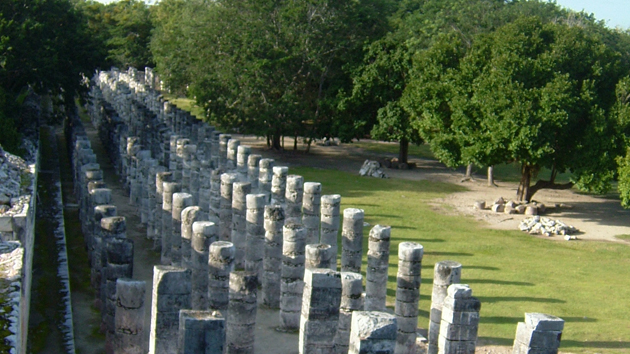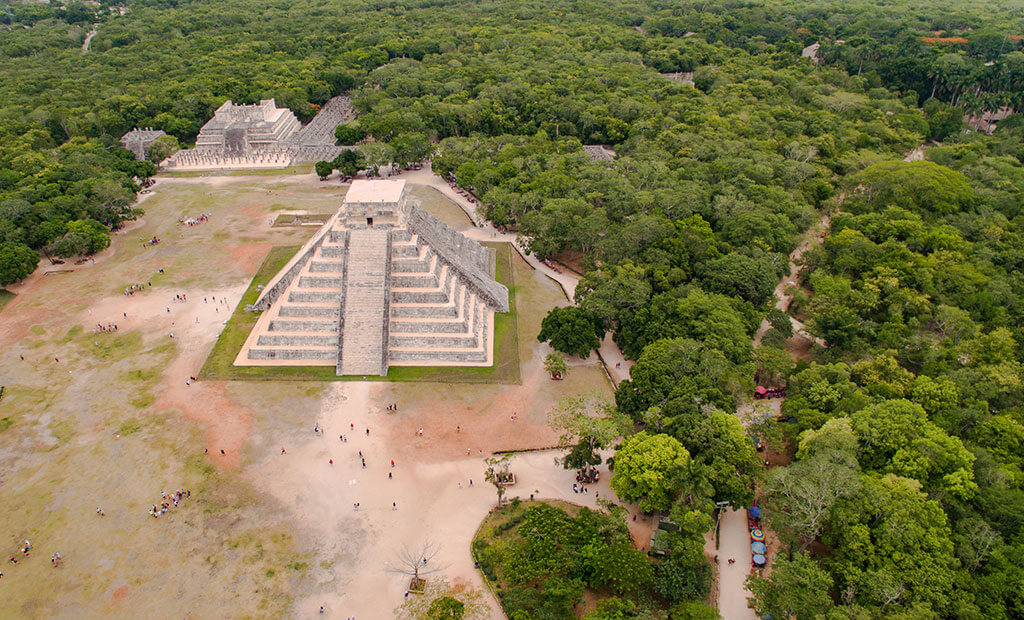Introduction
Perched on the Yucatán Peninsula, Chichén Itzá stands among the most iconic archaeological sites in the world. Declared a UNESCO World Heritage Site in 1988, it showcases the genius of ancient Maya civilization and the cultural blend with Toltec influences.
Over centuries, it evolved into a grand fusion of religion, astronomy, art, and governance — a testament to human creativity and ancient knowledge.
This complete guide explores its history, key structures, and how to visit this New Seven Wonder of the World in 2025.
Why Chichén Itzá Matters
At first sight, Chichén Itzá dazzles with its monumental architecture — El Castillo (Temple of Kukulcán), vast plazas, ceremonial ball courts, and mysterious cenotes. But its significance goes beyond size: it reflects a sophisticated civilization mastering astronomy, engineering, and spirituality.
This city was both a scientific observatory and a religious capital, proving that the Maya were not just builders, but visionaries aligning architecture with the cosmos.
A Brief Historical Timeline
Early Maya Foundation (6th–10th centuries CE)
Founded around A.D. 600, Chichén Itzá began as a Maya ceremonial and residential center featuring Puuc-style architecture — intricate stonework and decorative facades. Notable early structures include the Nunnery (Casa de las Monjas), Akab Dzib, and the Temple of the Panels.
Maya-Toltec Fusion (10th–13th centuries CE)
By the 10th century, Toltec influence from central Mexico transformed Chichén Itzá into a hybrid metropolis. Iconic Toltec elements — feathered serpents, warrior columns, and colonnaded halls — merged with Maya engineering, symbolizing a blend of cultures and ideologies.
Peak and Decline (13th–15th centuries CE)
Between A.D. 1100–1400, Chichén Itzá reached its zenith as a regional power center of trade, governance, and ritual. Its decline came gradually, likely due to environmental stress, political shifts, and trade route changes. By the 15th century, it was largely abandoned but never forgotten.

Setting, Name & Natural Environment
The name Chichén Itzá means “At the mouth of the well of the Itzáes” — derived from chi (mouth), ch’en (well), and Itzá (the Maya group).
The site lies about 2.5 hours from Cancun and 45 minutes from Valladolid, perfectly situated for day trips. It thrived in a limestone region where cenotes (natural sinkholes) provided essential fresh water. These cenotes also held deep spiritual meaning, seen as portals to the underworld (Xibalba).
The Iconic Structures of Chichén Itzá
El Castillo (Temple of Kukulcán)
The pyramid of Kukulcán, with 365 steps (one for each day of the solar year), symbolizes time itself. During each equinox, sunlight casts a shadow forming the illusion of a serpent descending the stairs — a celestial event that draws visitors worldwide.
Temple of the Warriors & The Hall of a Thousand Columns
This complex displays Toltec-inspired carvings of warriors and serpents. Once roofed, the forest of columns supported a grand ceremonial space — representing both political and religious might.
El Caracol (The Observatory)
This round tower’s windows align with the movement of Venus and other celestial bodies. It shows how the Maya used architecture for astronomical calculations that governed agriculture and ritual calendars.
The Great Ball Court
The largest in Mesoamerica, it stretches over 500 feet. Its acoustics are extraordinary — a whisper at one end can be heard clearly at the other. The Maya ball game (Pok-ta-Pok) was not merely sport, but a ritual reenactment of cosmic duality, sometimes involving sacrifice.
The Sacred Cenote
This vast sinkhole was used for offerings to Chaac, the rain god. Archaeologists have found jade, gold, pottery, and even human remains — evidence of rituals seeking divine favor during droughts or crises.

Why It’s a UNESCO World Heritage Site
Chichén Itzá’s global recognition stems from its Outstanding Universal Value, under UNESCO criteria:
Criterion (i): A masterpiece of human creative genius — precise astronomical alignment and architectural beauty.
Criterion (ii): A symbol of cultural interchange between the Maya and Toltecs.
Criterion (iii): A unique testimony to a cultural tradition — the Maya-Toltec civilization in northern Yucatán.
Visiting Chichén Itzá Today – Everything You Need to Know
Getting There
From Cancún or Playa del Carmen: approx. 2.5–3 hours by car.
From Valladolid: about 45 minutes.
Entry Fee: around 614 MXN for international visitors (subject to change).
Hours: 8 a.m.–5 p.m. daily. Arrive early for cooler weather and smaller crowds.
Best Time to Visit
November–March offers comfortable temperatures. Visit at opening time or late afternoon for fewer crowds and ideal light for photography.
What to Bring
Sunscreen and hat
Comfortable walking shoes
Water and snacks
Camera (tripods are restricted)
Eco-friendly mindset — protect this fragile heritage site
Guided vs. Independent Visits
While self-exploration is possible, a certified local guide can enhance your experience with deep insights into Maya astronomy and mythology.
(Tip: You can book guided Chichén Itzá tours directly from Cancun or Playa del Carmen for a seamless day trip.)

Cultural Legacy and Modern Importance
Regional Influence
Chichén Itzá’s Maya-Toltec architecture influenced later sites across Yucatán. The use of serpent and warrior imagery spread widely during and after its peak.
Global Recognition
Named one of the New Seven Wonders of the World in 2007, Chichén Itzá attracts over 2 million visitors annually. It’s a cornerstone of Mexican heritage tourism and a powerful reminder of ancient ingenuity.
Preservation Challenges
Managing this massive site means balancing tourism, conservation, and respect for indigenous heritage. Preservation teams work continuously to prevent erosion, vandalism, and over-tourism.
Why You Should Visit Chichén Itzá
Standing before El Castillo as the shadow serpent descends, listening to the echoes of the Ball Court, or peering into the Sacred Cenote — every experience connects you with a thousand years of history.
Whether you’re an archaeology enthusiast, photographer, or curious traveler, visiting Chichén Itzá is a journey through time and belief.
You can easily combine it with cenote swimming, a stop in colonial Valladolid, or a private tour from Cancun to make your visit unforgettable.
Final Thoughts
Chichén Itzá is not just an archaeological site — it’s a symbol of human curiosity, astronomy, and spirituality.
Its pyramids, observatories, and sacred wells tell a story that still speaks today: how people once united heaven, earth, and architecture into one cosmic order.
Visiting this wonder leaves you inspired — a reminder that even a thousand years later, the spirit of the Maya still echoes across the stones of Yucatán.
Tags
PrimeOne Tour
Expert travel guide specializing in Maya culture and history.

